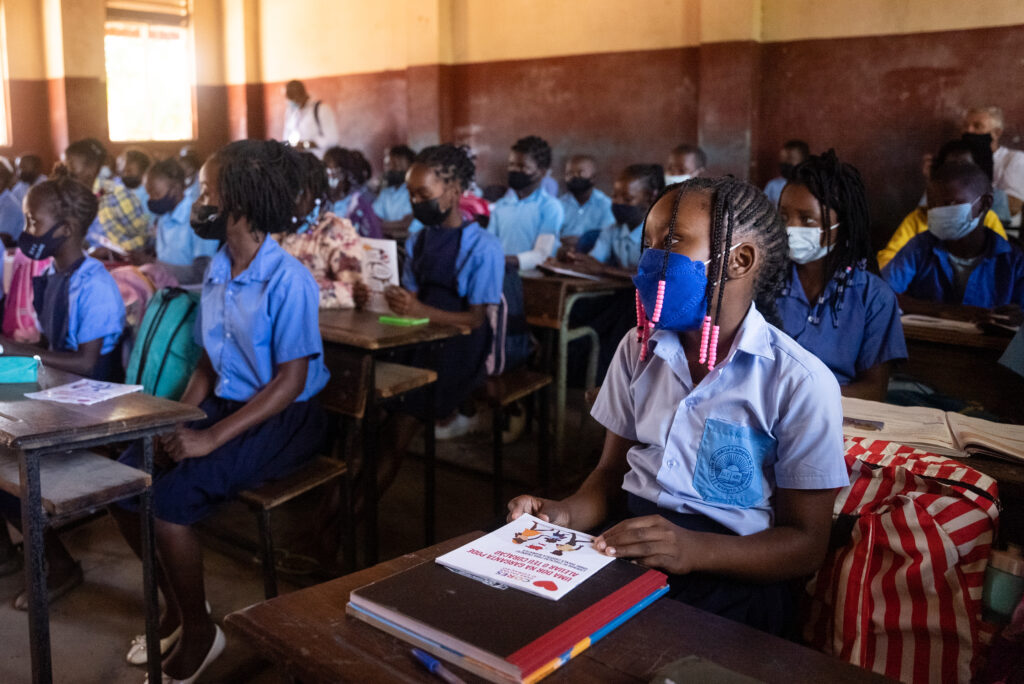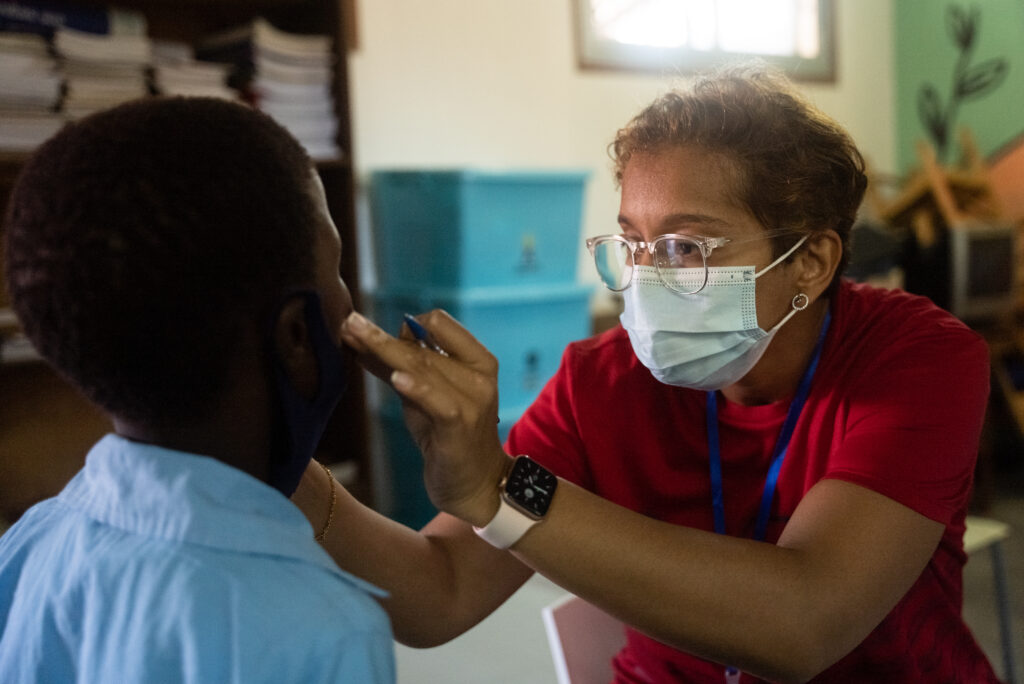In 2019, WHF designed an easy-to-print colouring book. It is a fun, educational resource that allows children to play and learn about the links between sore throats, rheumatic fever (RF) and rheumatic heart disease (RHD), and the damage these can cause to heart valves. It aims to instill the right reflexes in children, their parents and teachers when a child has a sore throat.
WHF conducted a pilot project in Mozambique in September 2019 in partnership with the Mozambique Institute for Health Education and Research (MIHER) where 1,100 children and 44 teachers were educated on RF and RHD. The project attracted the attention of the Ministries of Health and Education, which were involved in setting up the pilot and field activities.

Based on the success of the pilot project, WHF launched in April 2021 a large-scale prevention programme for RF and RHD: Colours to Save Hearts. The programme’s objectives were:
1. Increase awareness and knowledge of children, parents and teachers about RF and RHD
Health education (of teachers, students, and parents) for early detection and prevention of strep infection and heart disease, reinforcing the existing school health programme, as well as the extension of these educational activities to the neighbourhoods and community of the KaMavota District. Activities such as lectures, recreational games, meetings, distribution of information material, as mechanisms to
reinforce the education activities to be developed in the school space.
Educate 60,000 children (30,000 per year) on what to do if they experience sore throat symptoms. By educating the children, we will also indirectly reach their families with an estimated 200,000 people (100,000 per year).
Train 600 schoolteachers (300 per year) in understanding, identifying, and managing suspected sore throats.

2. Build the capacity of health professionals in the diagnosis, management and surveillance of sore throat, RF and RHD
Training 50 health professionals (25 per year) in the screening, diagnosis, management and monitoring of sore throat, RF and RHF.
3. Strengthening of local structures to enable the management of children through screening campaigns and referral to the health centres involved
4,000 children are screened (2,000 per year) Creation of a system of surveillance and reference of children from schools to health units, ensuring support in medicines for children detected with RHD.
4. Increase the attention of health authorities on the effectiveness of a prevention campaign on RF and RHD
Support the local cardiac surgery capacity. Allocate 10% of all money fundraised to support heart valve surgeries (an estimated 3 patients per year).
Download our first-year report here.


